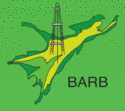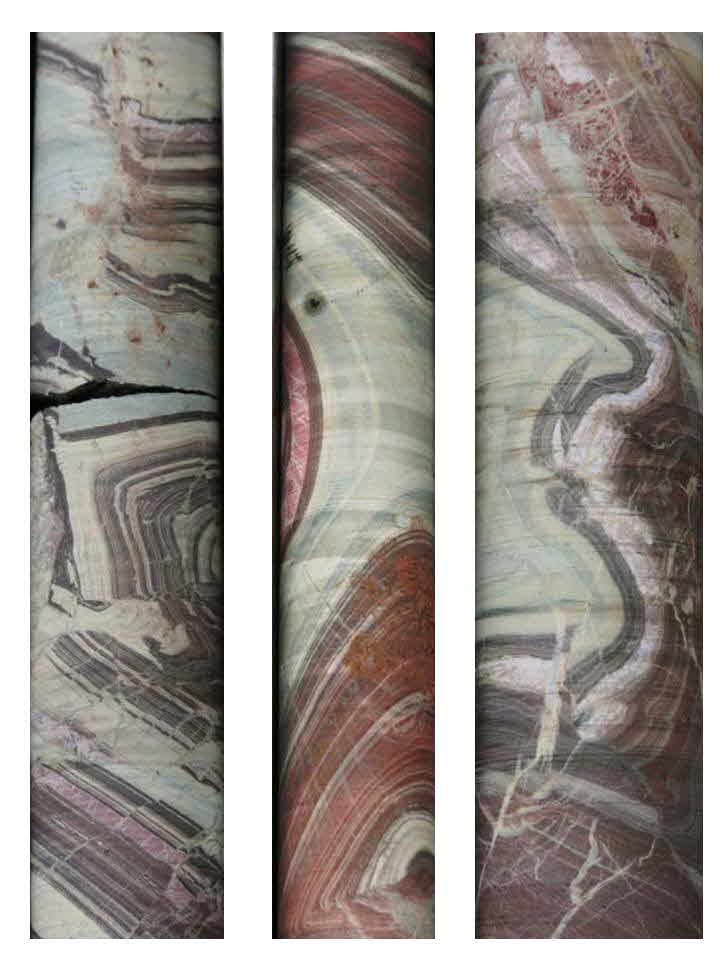Daily News
Project Acronym: BARB | State: Completed | Expedition ID: 5047
ins.: 2011-12-22 01:00; ( Age: 13 yrs )

Category:
Barberton_

Barberton: 2011-12-22
Drilling stopped on 14th December for the Xmas break. It ...

Drilling stopped on 14th December for the Xmas break. It will start again in mid January We are progressing at two sites. The Buck Reef hole (BARB3) is at a depth of 715.55 m and it is STILL in chert, making a total of some 500m of this beautiful but hard to drill rock. The middle Fig Tree hole (BARB4) is 325m and is drilling the wonderfully coloured and structured ferruginous cherts and jaspers illustrated in the photos. Here is a description based on photos of the core, from Don Lowe: The bright red bands are jasper (chert containing hematite or another form of oxidized iron), the dark maroon bands are hematite or mixtures of chert and hematite, and the white bands are pure chert. The pale greenish bands may include both clayey layers and chert layers that contain small amounts of clay and/or siderite. I do not see any sandstone beds in this core in the photographs. Compared with most outcrops of this unit, there is more white chert interlayered with the jasper and hematite bands in the core, but with the abundant jasper and hematite bands, I would call this banded iron formation (BIF). In Barberton, the rocks that we call banded ferruginous chert (BFC) lack jasper and hematite layers, usually consisting of chert bands, bands rich in siderite (iron carbonate), and often but not always clayey layers. There should be some BFC in the core as well as BIF and, in outcrop, both locally contain a few turbiditic sandstone beds. This stuff is a real mixture, which is why it is so interesting sedimentologically.
- Links:
- /fileadmin/icdp/projects/data/barberton/2011_12_22/DIS_OTHER.htm
